300 Plant Varieties in 1 Acre Increases Mysuru Farmer’s Profits to 10 Lakhs!
Thammaiah PP from Mysuru has adopted a self-sustaining model that gives more yield, uses less water and more importantly requires minimal space.
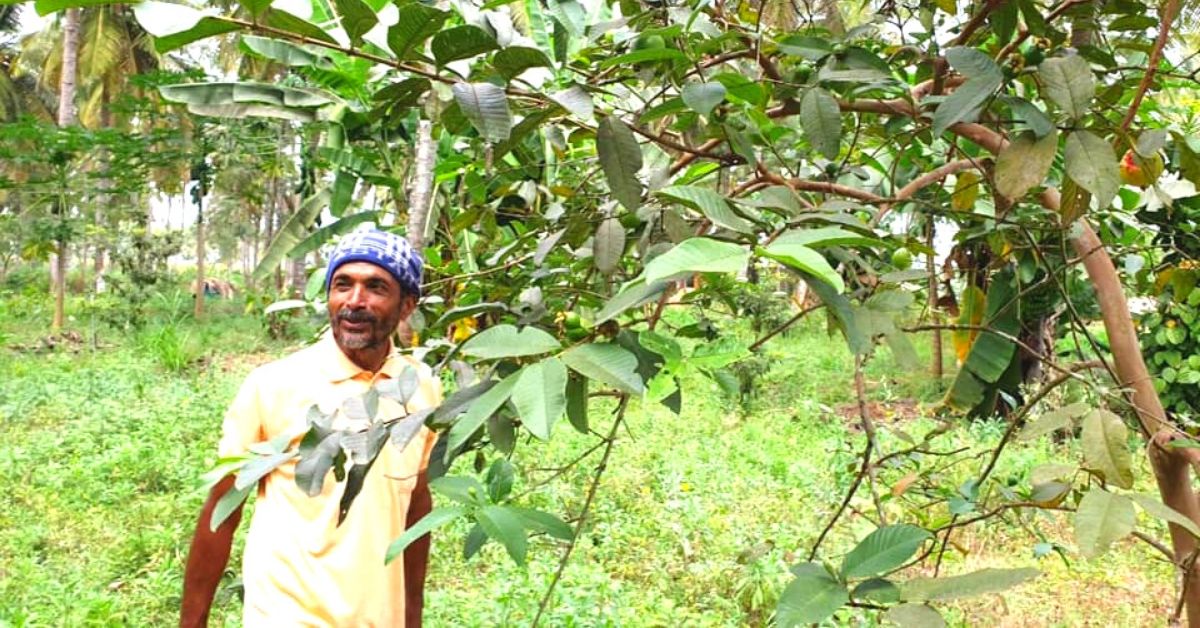
For years, Thammaiah PP had to continuously fight recurring problems of poor irrigation and crop failure despite practising organic farming since 1984. The primary concern was availability of water to irrigate his fields. At his wits end, the farmer from Hunsur taluk of Mysuru (susceptible to droughts annually) decided to take an unconventional route a couple of years ago and experiment with five-layer farming on one acre of his farm – a model that proved to be self-sustaining.
And now the 69-year-old is now reaping great benefits. His water usage has come down by 50 per cent and yields have increased tenfold, giving him annual profits of Rs 10 lakhs.
Through multi-layer farming, Thammaiah is growing 300 varieties of plants, from coconuts, jackfruits, millets, leafy vegetables, mangoes, areca nut, bananas to black pepper on just one acre!
The kind of benefits that Thammaiah is reaping is something that a farmer only dreams of but is hardly able to achieve it.
So What Exactly is Five-Layer Farming?
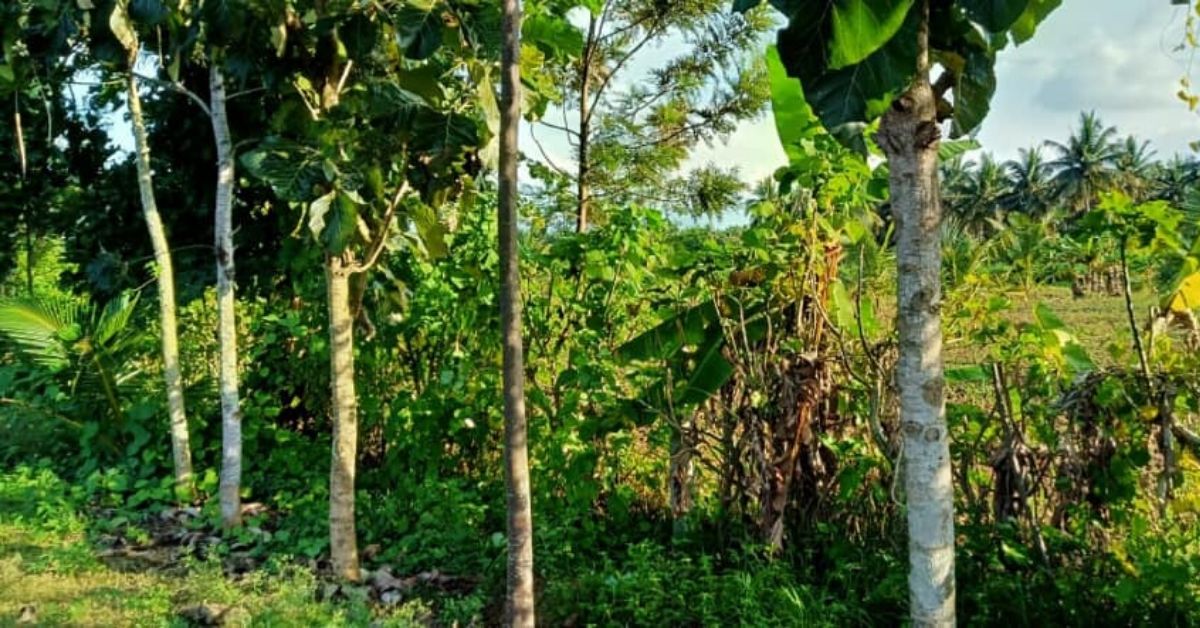
In this method, a farmer grows plants of different heights on same field at the same time to optimise the use of land. Elaborating about its benefits, Thammaiah tells The Better India:
It is a self-sustaining technique as by the time the first crop is harvested, the second crop is already getting ready to be cut. Since the plants are growing in close proximity with each other, the amount of water required for one crop is sufficient to cover two or more crops, thus saving lakhs of litres of water.

When he first learnt about this process a few years ago, he laughed it off considering the hardships he faced when he ditched chemical fertilisers and switched to organic farming in 1984.
“My crops were so addicted to chemical fertilisers that it took them almost a year to get comfortable with organic manure. My production was low for the first few cycles despite having 6-acre farmland. So when I came across multi-layer cropping that allows multiple plants to co-exist I did not pay much need. It was only when I visited a fellow farmer and saw the theory turned into a practical success, I started it,” he informs.
Wanting to experiment, he dedicated one acre to 5-layer farming and on the rest of his farm, he continued growing crops in the conventional way.
How It Works
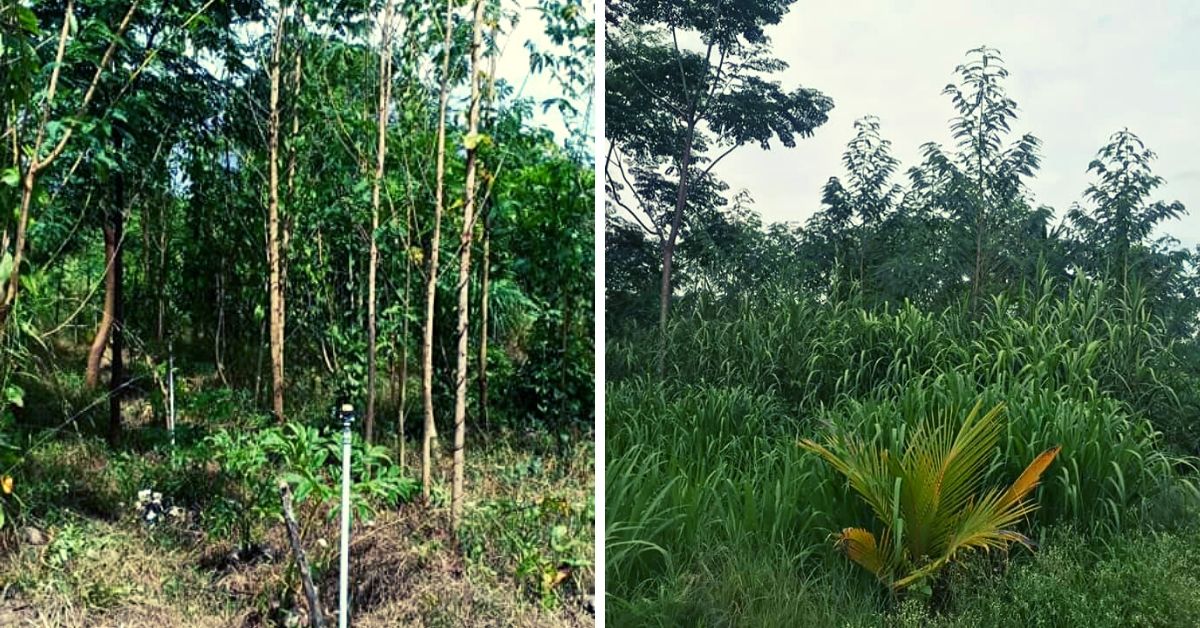
Thammaiah’s experiment began with coconut trees and he improvised from there.
- He first planted coconut trees on the east and west side of the field at a distance of 30 feet.
- In between two coconut trees, he planted a chiku tree. In the space between the coconut and chiku, he planted a banana tree.
- Below the coconut trees, he has planted areca nuts and black pepper. In between these trees, he planted spices.
- In the north and south side of the field, he planted trees like mango, Jamun, jackfruit, wood apple.
- The second layer under mango and jackfruit trees consist of moong dal, lemon tree, drumstick.
- He has also planted green vegetables and millets. They prevent the growth of weeds by covering the soil.
- Below the ground, there is turmeric, elephant yam, ginger, carrot, and potatoes.
The other plants that Thammaiah grows include 140 medicinal plants, amla, reshma cherry, coffee, rosewood, custard apple, sandalwood, and sugarcane among others.
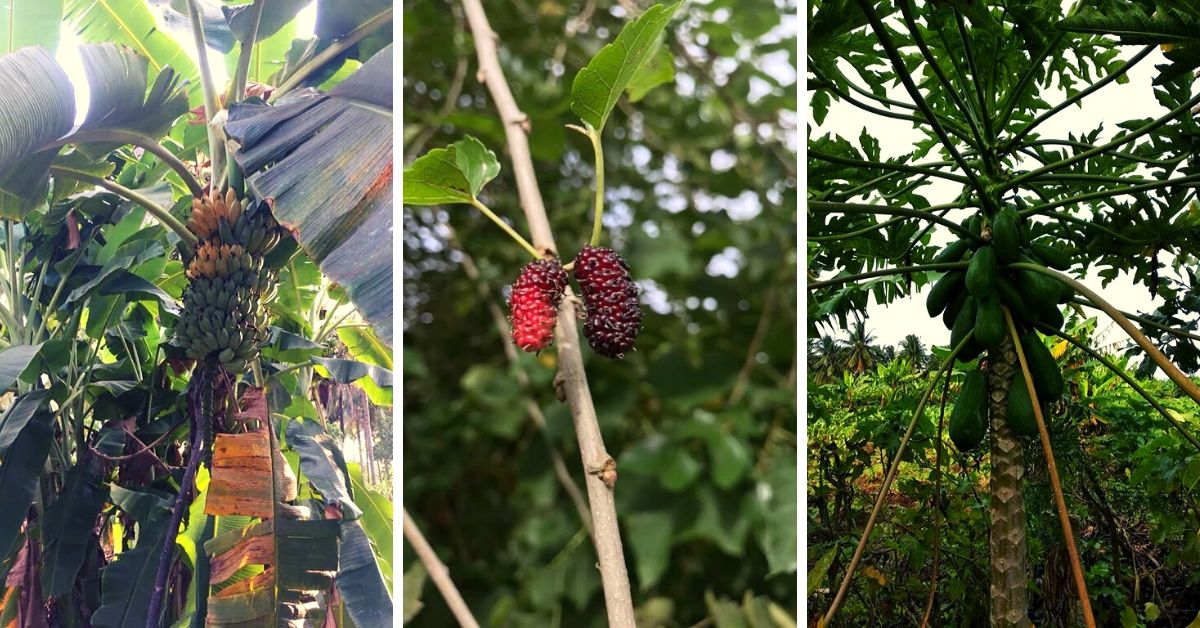
The system depends on symbiosis – each plant helping the other to grow.
“Turmeric controls the bacteria growth due to its antimicrobial properties, vegetables prevent weed growth, spices are in between as they require less sunlight. Meanwhile, coconut trees help the penetration of the sunlight to other plants and at the same provide shade so that they are exposed to the light for long,” informs Thammaiah.
During the harvest, instead of cutting the plants, he uproots them that allows sunlight, water and oxygen to penetrate deeper, thereby improving the soil quality.
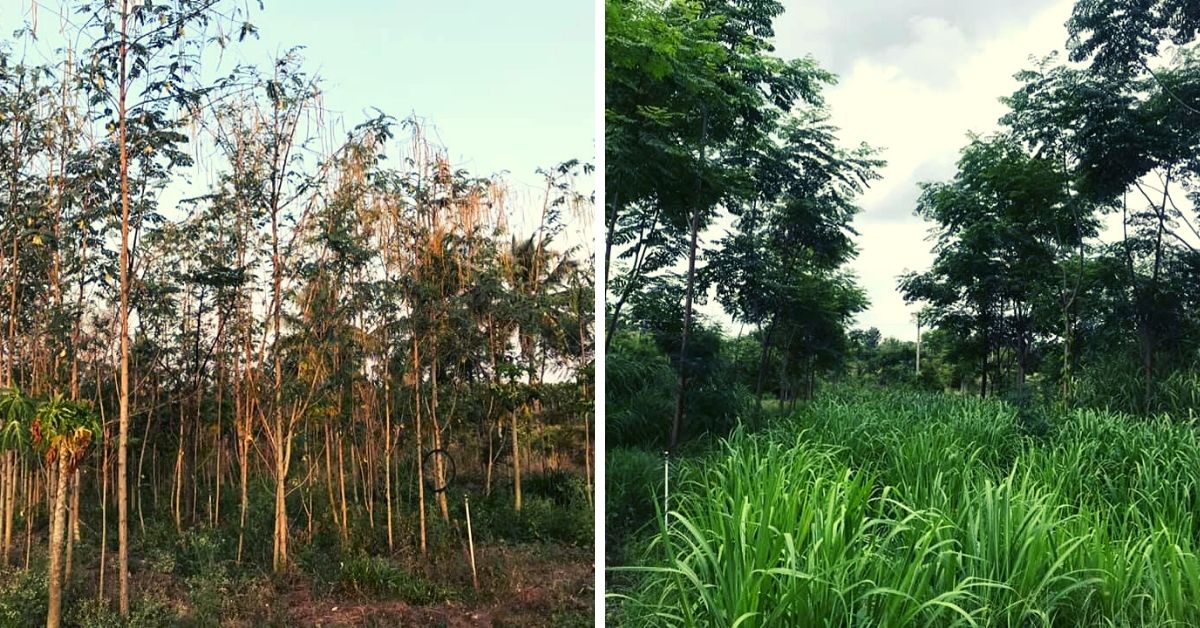
Benefits Of Five-Layer Farming
“Oh! there are many,” points out Thammaiah
To begin with, water usage goes down significantly as shrubs, creepers and veggies retain the water and the shade by large trees further prevents evaporation.
“If in one acre, a conventional farmer uses more than 20,000 litres of water per rotation, I need less than 6,000 litres,” claims Thammaiah.

Additionally, he has also constructed six water ponds (each with a capacity to store 25 lakh litres of water) that conserve rainwater, thereby eliminating the problem of water scarcity. Another benefit of this model is getting yield round the year since he grows crops that have different harvest periods.
“One tree gives me 300 coconuts regularly, harvesting cycle of bananas and some vegetables is one week. Meanwhile, seasonal crops and fruits are produced across three seasons. And medicinal plants are harvested every day,” informs Thammaiah.
Though he churns profits from selling the produce in the market throughout the year, Thammaiah has alternate earning options as well.

He maintains a coconut and medicinal plant nursery and makes value-addition products like groundnut oil and pickles.
Overall speaking, Thammaiah’s model farm has recorded a cut in investments, multiplied profits, solved water woes, recharged groundwater while giving him pest-free healthy food in minimal space.
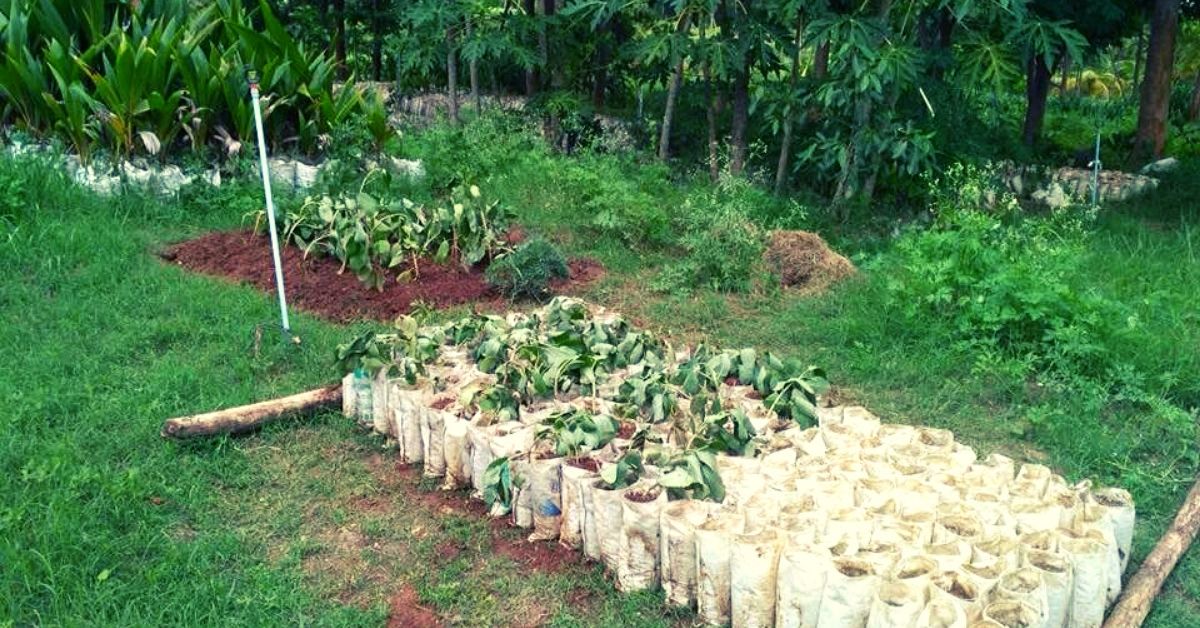
In a country like India where marginal farmers are struggling to earn a decent living and the sale of chemical-infused is rampant, Thammaiah’s organic model could be an effective solution.
If Thammaiah’s story inspired you, get in touch with him here.
Also Read: 25 Kg Cauliflowers, 3-Ft Brinjals & Padma Shri: This 72-YO Farmer is Truly Amazing
(Edited by Saiqua Sultan)
Like this story? Or have something to share?
Write to us: [email protected]
Connect with us on Facebook and Twitter.
This story made me
- 97
- 121
- 89
- 167
Tell Us More
We bring stories straight from the heart of India, to inspire millions and create a wave of impact. Our positive movement is growing bigger everyday, and we would love for you to join it.
Please contribute whatever you can, every little penny helps our team in bringing you more stories that support dreams and spread hope.



















